Basma: what is, composition and instructions for use

Basma is the oldest natural cosmetic product. It was originally used for dyeing clothing, producing writing ink. A little later, the natural product began to be used as a hair dye, which not only gave a dark tone to the curls, but also strengthened them, making them strong and shiny. Today, more and more women prefer synthetic dyes, forgetting how useful basma is.
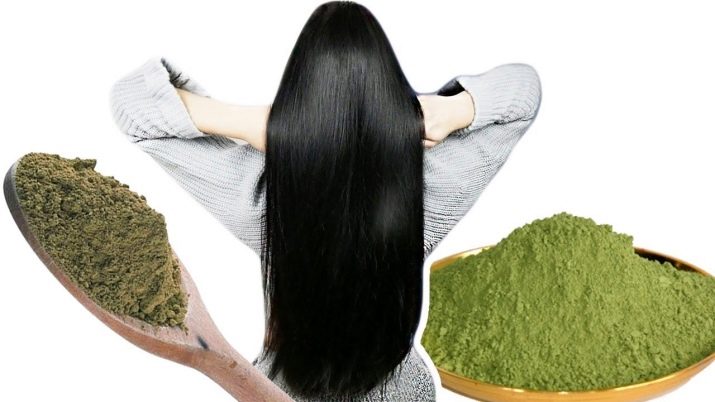
What it is?
Everyone knows basma as a greenish powder used for dyeing hair. To obtain the product, the technology of drying the leaves of the indigofer tree is used, after which they are ground into powder.
A cosmetic product used in its pure form paints the curls black, but sometimes it has a slight lilac shade.
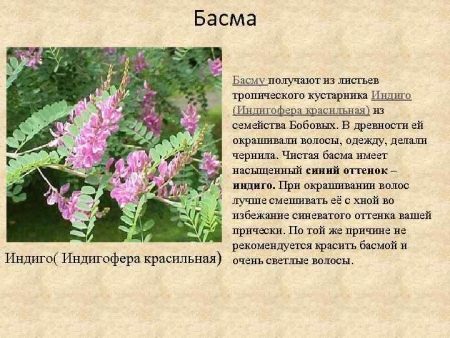
You can get the most natural color by combining basma with henna. However, it is worth knowing that proportions in this case play an important role - the final hair color will depend on the amount of materials used.
The main feature of such a natural paint is its durability, in addition, it is completely harmless to the hair and skin.
Dyed curls with basma do not lose the resulting shade for several months. The cosmetic product has a strong effect on light and gray hair, as for natural dark hair - it only sets off them.
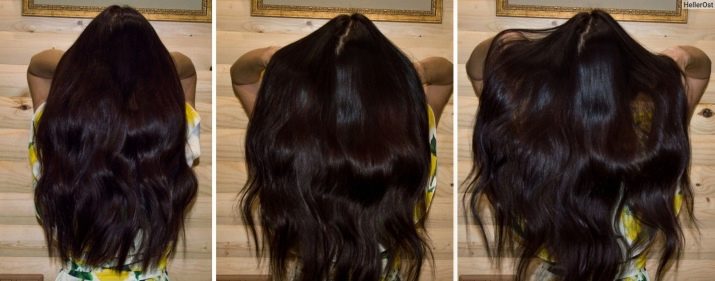
Cosmetologists do not recommend combining it with medicinal preparations for hair, mixing it with masks, tonics, balms - the active substances that make up the basma can enter into a chemical reaction with other ingredients and negatively affect the structure of the curl, the scalp.
Composition
Basma is a natural, pure product that is obtained from a natural tropical plant. In fact, the dye consists exclusively of useful substances, among which vitamin C occupies a special place, which has a positive effect on the condition of hair and skin. In addition, there is resin, wax, mineral tannins, which are responsible for shine and volume.
In general, basma is a curative cosmetic product. Getting on the scalp, it has a wound healing, disinfecting, anti-inflammatory effect. So, with its help, they fight various skin diseases of the head. For example, trichologists recommend turning to the remedy in the fight against dandruff, seborrhea, severe hair loss. In addition, the natural dye is able to eliminate all inflammatory processes, destroying harmful bacteria.
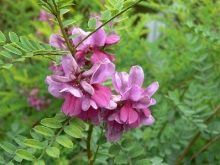
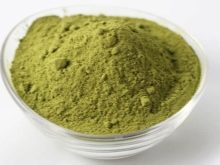
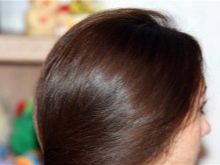
Benefit and harm
This natural coloring product is known primarily for its medicinal properties. The main benefit of basma lies precisely in its composition - there are biologically active trace elements involved in the metabolic processes of the body, as well as wax, resin, a high percentage of vitamin C, tannins.
Useful properties of natural paint:
- significant reduction in hair loss;
- helps with dandruff, itchy scalp;
- has a wound healing effect;
- neutralizes the resulting inflammation;
- participates in the fight against microbes, bacteria;
- firmly and permanently paints over gray hair;
- thickens the hair structure from the inside;
- gives curls shine, softness, volume;
- gives a natural dark shade, and in combination with henna allows you to experiment with colors;
- is a therapeutic agent in the composition of a rinse, infusion, mask;
- activates hair growth;
- prevents premature baldness;
- replenishes the lack of vitamins in the hair follicles;
- is a completely hypoallergenic product.
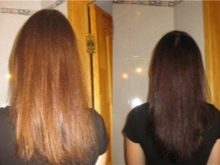
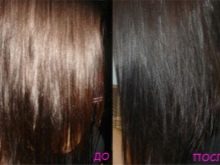
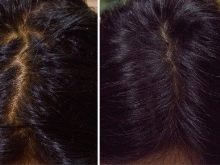
Some women during pregnancy are forced to abandon any coloring agents in order to eliminate the likelihood of harmful effects on the fetus. Most cosmetics contain ammonia, which is contraindicated for pregnant and lactating women.
However, experts allow the use of vegetable paints such as henna and basma. First of all, due to the fact that they absolutely do not cause an allergic reaction.
In addition, the rich vitamin composition will have a beneficial effect on the health and beauty of the expectant mother. During pregnancy, a woman often lacks trace elements, which leads to deterioration of the condition of her teeth, hair and nails. Basma coloring can solve the problem with curls - in addition to the coloring effect, it will act as an excellent natural conditioner. And, of course, one cannot fail to mention the low price and availability of the product, which will significantly save time and money.

In general, basma is a completely safe cosmetic product. After its application, allergic reactions do not appear, and hair does not deteriorate, in contrast to chemical dyes based on ammonia.

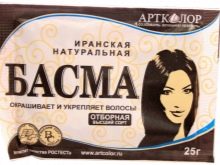
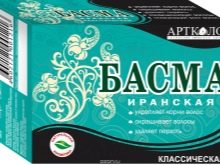
The only thing you need to know is that you cannot use an expired dye. Such a product is harmful to human health.
Basma is sold today in sachets or boxes with a production / expiration date. Be sure to read this information before purchasing. A spoiled basma can be reflected by excessive dryness, stiffness and brittle curls.
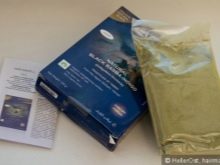
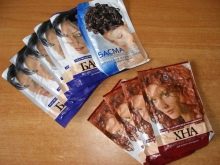
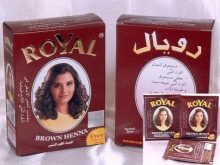
Another disadvantage is the unpredictability of the staining result. So, the wrong proportions will lead to unexpected shades up to green. Therefore, it is best to seek help from professional colorists who can achieve the desired result without harm.

In order to avoid "green" and "blue" effects, masters mix basma with henna or other natural ingredients. Also, you should be more careful for those who have recently undergone a hairdressing bleaching procedure or a perm - a too rich result is possible. Owners of naturally light hair fall into the same category - red, green, blue tones are possible.
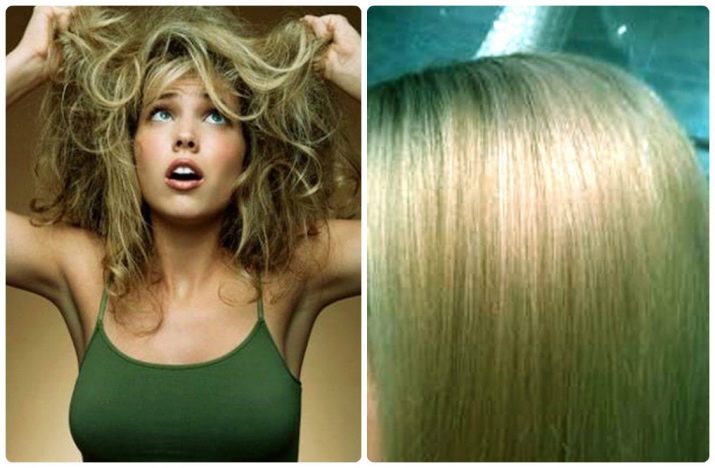
The following points affect the staining result:
- original color - light colors are more prone to the appearance of greenish-blue shades;
- water temperaturein which the substance is diluted - the cold liquid prolongs the procedure;
- condition of curls - damaged ones are easier to stain;
- duration of the procedure - the duration of the paint action affects the color saturation;
- observance of proportions - you can get the desired shade only with the exact ratio of dyes.
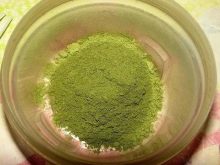
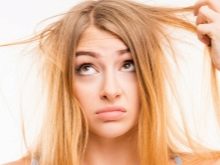

How to dye your hair?
Many women note that after using this cosmetic product, their hair acquires a beautiful bright tone, and even becomes healthier. Basma, together with henna, demonstrates the darkest shades, and knowing the correct proportions of the components, you can get a beautiful chocolate one. In addition, with its help, it turns out to return the native light brown color, as well as paint over the regrown gray hair. In addition to all this, this type of staining has a strengthening, softening effect, eliminates the frequent problem of sectioning the ends.
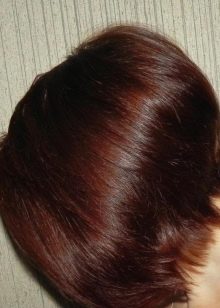
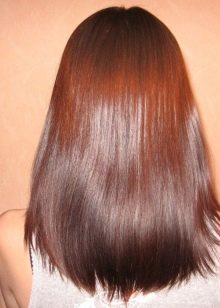
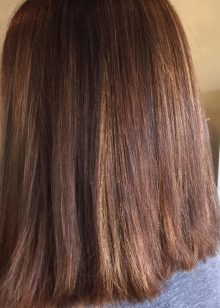
Although basma is an environmentally friendly product, it is not inferior in strength to professional products. Therefore, before the procedure, take care of protecting the skin of the face - generously lubricate the hairline with a fat cream, and also cover the shoulders with a film or cloth.
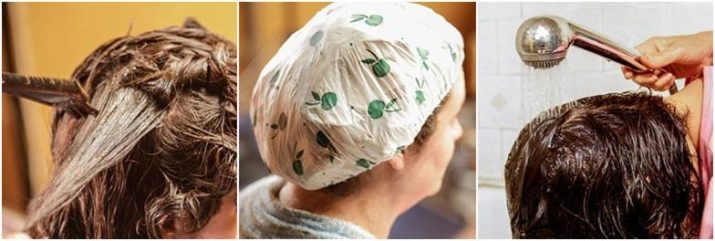
How to breed basma
- Use only glass or porcelain dishes (deep bowl) - metal is oxidized;
- pour out the powder, pour boiling water over it;
- stir until a creamy consistency is formed, kneading the lumps well;
- after 15 minutes, the green mixture will turn black - this means that the paint is ready;
- if you add glycerin or cosmetic soap, the paint will drain less;
- only hot basma is applied to the head;
- the main rule - hair must be clean (wet or dry);
- apply the coloring agent with a special brush.
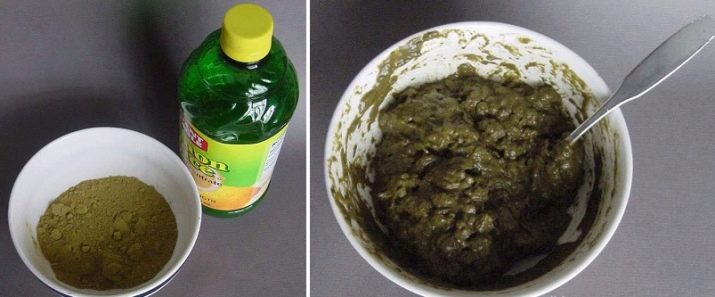
Basma staining technology
- To get black, you need to use additional components. Without mixing, you get a brown-blue, dirty green or purple tone.
- For a bluish tint, experts advise adding a pigment of the orange spectrum - henna, coffee.
- Proportions - basma: henna - for black (2: 1), chestnut (1: 1), light shades (1: 1.5), bronze effect (1: 2).
- You should start from the back of the head, gradually passing into the parietal, the last area will be the temples or bangs (if any).
- Upon completion, you must put on a special hat on your head, a plastic bag is also suitable. From above, all this is wrapped in a towel.
- The longer you keep the mixture on your hair, the richer the color will be.
- After the specified time, wash off the paint with warm water without shampoo.
- Dry naturally.
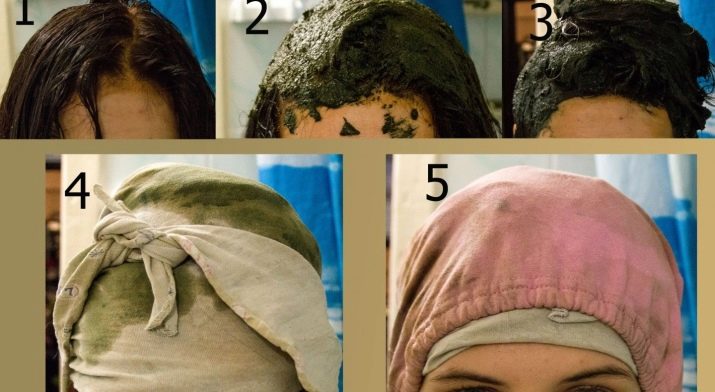
Safety engineering
When dyeing the head, in a hairdresser or at home, all established rules must be followed. Before starting a home procedure, experts advise you to study your hair in more detail - color, condition, possible reactions, this will save you from an unexpected result. Despite the naturalness of the powder, it is still worth conducting an allergy test - its components can cause a slight reaction on the scalp.
To carry out the staining procedure at home without harm to health, observe the following rules:
- give preference to branded high-quality dyes - they, as a rule, have a high cost, but they please with the result;
- do not forget to read the instructions for use of the dye - it is in each package, do not neglect the rules indicated in it;
- keep the dye on your hair for a strictly specified time;
- to protect the skin of your hands, it is recommended to use silicone or rubber gloves, and cover your shoulders with an oilcloth or a thick towel;
- at the end of the procedure, use a conditioner balm - it acts as a color fixer, and also gives additional shine and shine;
- do not use the same eyebrow / eyelash dyeing agent - this can negatively affect vision;
- the mixture that has got on the ears, face, eyes is washed off with plenty of water;
- it is important not to forget about the subsequent care of the colored strands - it is best to give up hair dryers or curlers, nourish and strengthen the hair with vitamin masks.
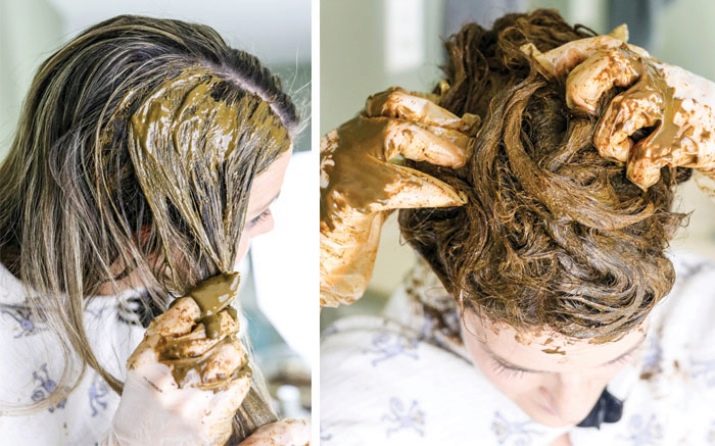
A few tips for working with Basma from professionals
- The shelf life of the powder is 1 year. Spoiled paint loses its coloring ability and is harmful to health.
- A suitable storage place is dry, dark. Basma lying in the refrigerator is ineffective.
- Try to use the prepared mixture immediately.
- The diluted powder is like wet sand. Masters advise adding egg white (1-2), oil, linseed broth there - this will greatly facilitate application.
- After dyeing, the hair will dry out a little, so it is important to moisturize and nourish it. For example, add oils to the finished dye - olive, almond, avocado, jojoba, but sunflower will not work. Make homemade nutritional masks from egg yolks, honey, castor oil, and aloe juice at least once a week.
- Before dyeing the entire head, try the product on one strand - this way you will understand if the result is good for you.
- Salt (1 teaspoon), a little ammonia will help to enhance the brightness of the curls.
- To obtain copper, golden, red, chocolate shades, coffee, tea, hibiscus, cocoa, onion husk decoction, red wine, walnuts, tansy, cinnamon, cloves, beets, calendula, raspberries, rhubarb, saffron, chamomile, elderberry, sea buckthorn are suitable ...
- Do not use chemical cosmetic paints after staining the basma - wait until it is completely washed off.
- The effect can be prolonged by applying mild shampoos, caring balms-conditioners.
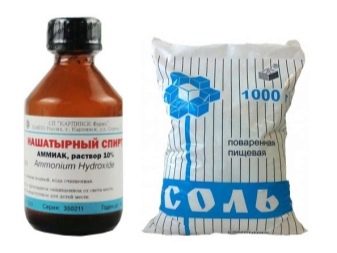
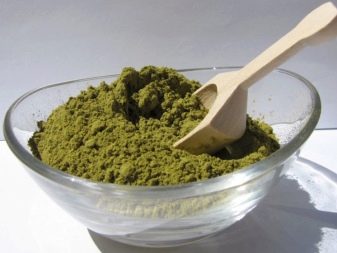
Reviews
First of all, women dyed with a natural dye note a strong, and most importantly, long-term caring effect - their hair has become strong, dense, hair loss and section have been significantly reduced. It should be noted the duration of such staining - basma is not washed off for several months, unlike an ammonia product.
Judging by the reviews, the main rule for using the dye is strict adherence to proportions. So, correctly mixed basma with henna (or other ingredients) will delight you with any desired shade. Many girls complain about blue and green hair - this problem is precisely related to the inaccurate amount of added ingredients. However, home staining can be successful and safe.
The main thing is to follow the instructions for using the coloring powder, and also follow all safety rules. This is the only way your hair will be bright, beautiful and healthy.
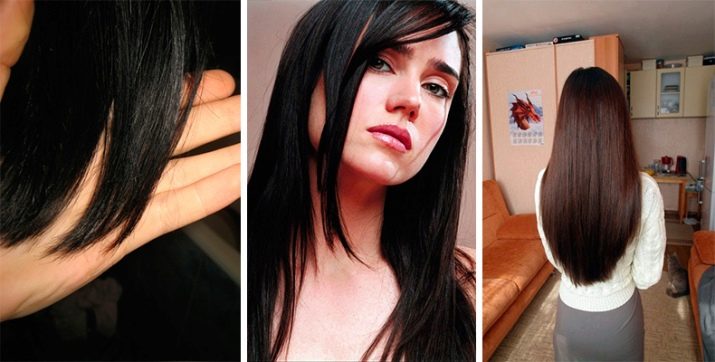
The next video is on how to dye your hair at home.








